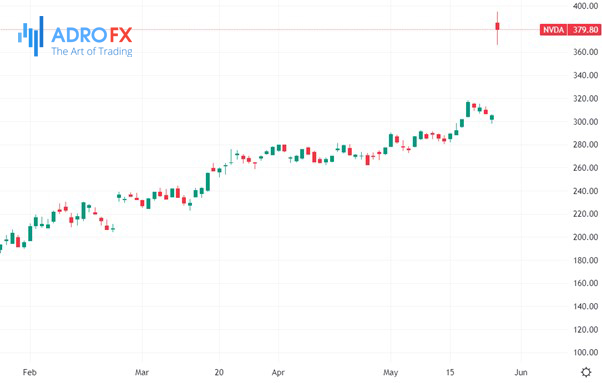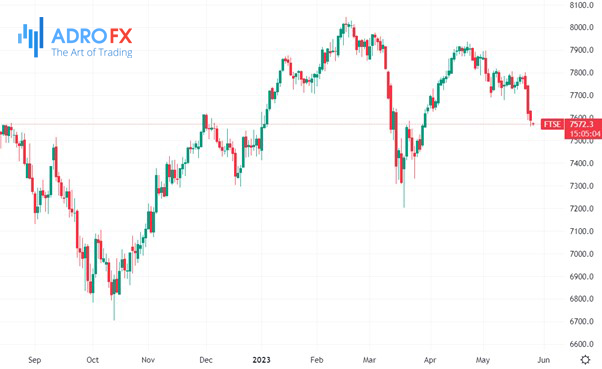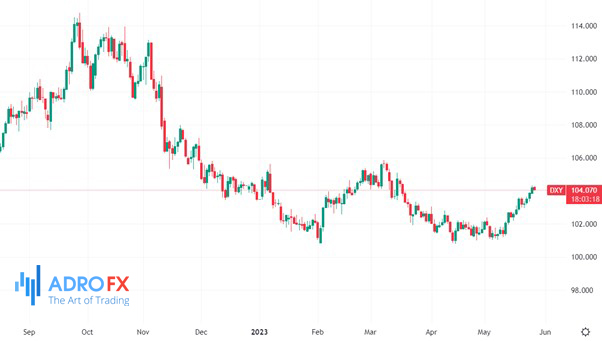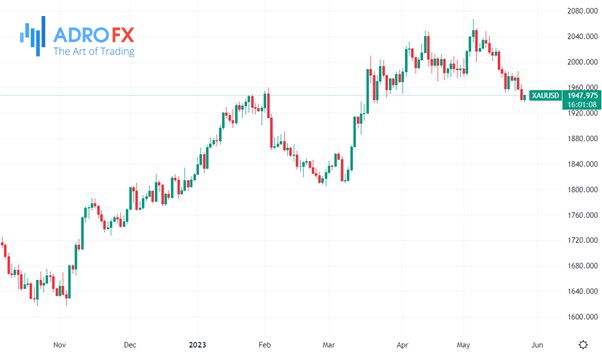Wall Street Soars as Nvidia Forecasts Surge, European Markets Face Losses Amid Recession Fears | Daily Market Analysis

Key events:
- Australia - Retail Sales (MoM) (Apr)
- UK - Retail Sales (MoM) (Apr)
- USA - Core Durable Goods Orders (MoM) (Apr)
- USA - Core PCE Price Index (MoM) (Apr)
On Thursday, Wall Street experienced significant gains as Nvidia released a remarkable forecast, causing the chipmaker's stock to surge and igniting a rally among AI-related companies. Nvidia Corp saw a remarkable 24% surge, reaching a record-high closing price. This extraordinary performance was a result of the world's most valuable chipmaker forecasting quarterly revenue that surpassed estimates by 50%.

European markets witnessed another day of losses as the aftermath of a sell-off continued to have an impact. The ongoing US debt ceiling negotiations added to the market unease, while Germany's unexpected contraction in Q1 GDP pushed the largest European economy into a recession.
Although the DAX and CAC 40 experienced modest losses, the FTSE 100 remained particularly unattractive, falling to fresh two-month lows with substantial losses.

This decline was fueled by comments from Russian Deputy PM Novak, which countered expectations of OPEC+ announcing further production cuts in their upcoming June meeting. Consequently, oil prices plummeted during the afternoon session.
Furthermore, natural gas prices in the UK and Europe continued to decline, reaching their lowest levels since June 2021. This contributed to weakness in BP and Shell stocks, ultimately dragging down the UK index below the 7,600 level for the first time since March 30th.
At the same time, the dollar gained strength despite the ongoing uncertainty surrounding the debt ceiling talks, as better-than-expected economic data emerged from the United States.

The number of claims for unemployment benefits in the latest week dropped to 229,000, surpassing estimates of 242,000. Additionally, the Q1 GDP growth rate in the US improved to 1.3% compared to the previously reported 1.1%.
This positive economic data propelled the Dollar Index (DXY), which measures the value of the dollar against a basket of six major currencies, to break through the 104.00 level. It concluded at 104.22, marking its highest level since mid-March (compared to 103.15 the previous day).
During this month, there has been a significant increase of 65 basis points in 2-year gilt yields as government debt markets anticipate the likelihood of further interest rate hikes and persistent inflation. This development has led to growing concerns about a potential recession or stagflation, which has consequently exerted downward pressure on the value of the British pound. The European Central Bank (ECB) is also facing a similar dilemma as it grapples with high inflation, especially after the downward revision of -0.3% in Germany's Q1 GDP, indicating that the German economy has entered a recession following a -0.4% contraction in Q4 of the previous year.

The New Zealand dollar has continued to face downward pressure, reaching its lowest levels this year. This decline follows an unexpected dovish shift by the Reserve Bank of New Zealand (RBNZ), which indicated that further interest rate hikes were not anticipated in the near term.
Furthermore, weakness has been observed in the commodity sector, leading to declines in the Australian dollar, Canadian dollar, and Norwegian Krone.
Meanwhile. gold prices remained near two-month lows on Friday, with substantial weekly losses attributed to concerns surrounding the US debt ceiling and expectations of higher interest rates. These factors led investors to shift their focus toward the dollar.

Gold's decline represents a sharp reversal from the record highs achieved earlier in May, as diminishing concerns over an immediate banking crisis diminished the yellow metal's safe-haven appeal.
The ongoing negotiations among US lawmakers to raise the debt ceiling remained a central point of attention. However, little progress was reported by both Democratic and Republican negotiators, increasing the risk of a US debt default with the approaching June 1 deadline.
Despite the potential consequences for the global economy, the dollar strengthened as traders saw limited factors that could impact its status as a reserve currency. Hawkish signals from the Federal Reserve contributed to the dollar's positive performance while weighing on gold. Policymakers indicated that US interest rates would remain elevated for a longer period to combat stubborn inflation. The upcoming release of the personal consumption expenditures index, the Fed's preferred inflation measure, was anticipated to provide further insights.
The prospect of higher interest rates diminished the attractiveness of non-yielding assets like metals and reduced their appeal. Other precious metals, including platinum and silver, were also expected to experience significant losses for the week, declining by approximately 4% to 5%.
Concerns about a global economic slowdown, particularly in the context of a potential US default and a recession in the Euro Zone, did little to boost safe-haven demand for gold.









